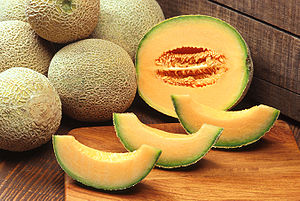Ensuring food safety is like driving a car. Well, sort of. Both poor food production methods and poor driving can kill you. But, in both cases basic safety steps dramatically reduce the risk of bad outcomes.
A recent deadly listeria outbreak traced to cantaloupes grown at Jensen Farms in Granada, Colorado has sparked concern as to whether fall cantaloupe from anywhere is safe to eat.
Back to the safe driving analogy: If I wear my seat belt, obey all traffic laws, drive the speed limit (keep reminding myself of that one), and watch out for other drivers I’ve just dramatically raised my safe driving record. Though nothing is 100% guaranteed, at least I’ve reduced my chances of having an accident.
Arizona farmers do the same thing when they grow food for you and me.
“Typically, all of our growers in Arizona follow a strict collection of food safety guidelines,” says Kurt Nolte, Ph.D., Yuma County Extension agent and Director of the Yuma Agricultural Center. “Additionally, Arizona melons are grown using below ground drip irrigation, and very rarely get wet in the field. Listeria, and other dangerous microbes tend to multiply in wet, moist environments. As another food safety precaution, Arizona-grown melons are field packed, and kept dry from field to fork.”
Arizona’s fall cantaloupe harvest just began and because of our safety efforts Arizona families can rest assured that the appetizing melon is safe to eat.
One Arizona cantaloupe grower uses Primus to audit their food safety practices. “We also regularly test our water and soil,” says Cindi Pearson of Santa Rosa Produce in Maricopa, Arizona. “It’s devastating when a grower from somewhere else has the type of outbreak being described in Colorado. But it’s one of the reasons why we and other melon growers in Arizona are so serious about our food safety systems.”
Cindi and her husband, Larry, are currently harvesting 4,000 acres of cantaloupe and are labeling everything to let customers know they’re Arizona-grown melons. “We want Arizona families to know where our melons are grown.”
More than 23,000 acres of cantaloupes are produced in Arizona, mainly in the spring. But in the fall, approximately 9,800 acres of cantaloupe are harvested.
Arizona Farm Bureau has confirmed with Bashas’ Grocery Stores that they are identifying the growing source of their cantaloupe. If you cannot identify where the cantaloupe are from, ask your local grocery store’s produce manager for information.
“Look for Arizona-grown products in your local grocery store including fall Arizona melons,” says Arizona Farm Bureau President Kevin Rogers.
Arizona families can expect fresh cantaloupe from Arizona for the next four to six weeks as the fall harvest of Arizona cantaloupe continues for that period.
By Julie Murphree, Arizona Farm Bureau
Related articles:
Food Safety, a Joint Effort You Can Help With
Easy Food Safety Tips for Your Home
Take Control of Your Own Food Safety




Pingback: Fall, Arizona Cantaloupe are here! Let’s Eat! | Julie's Fresh Air